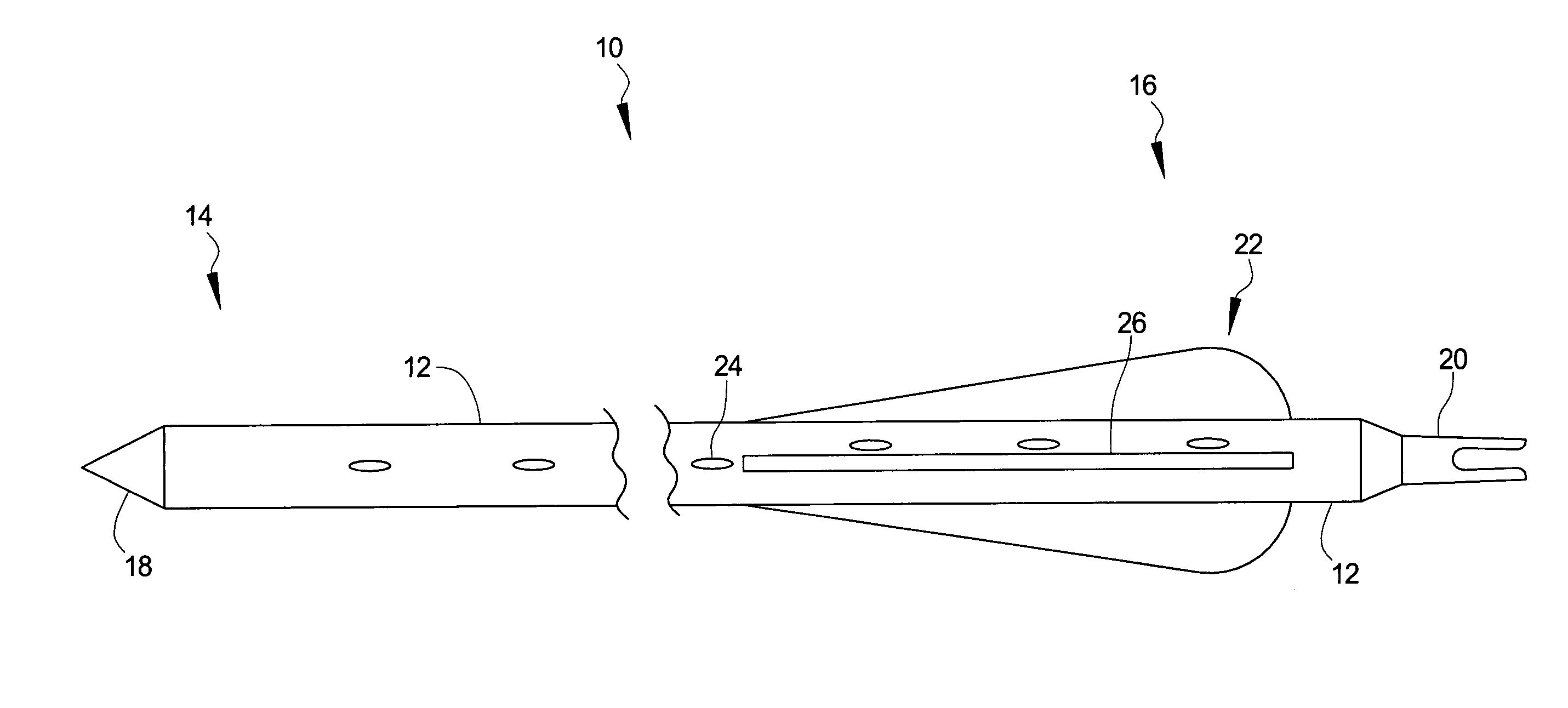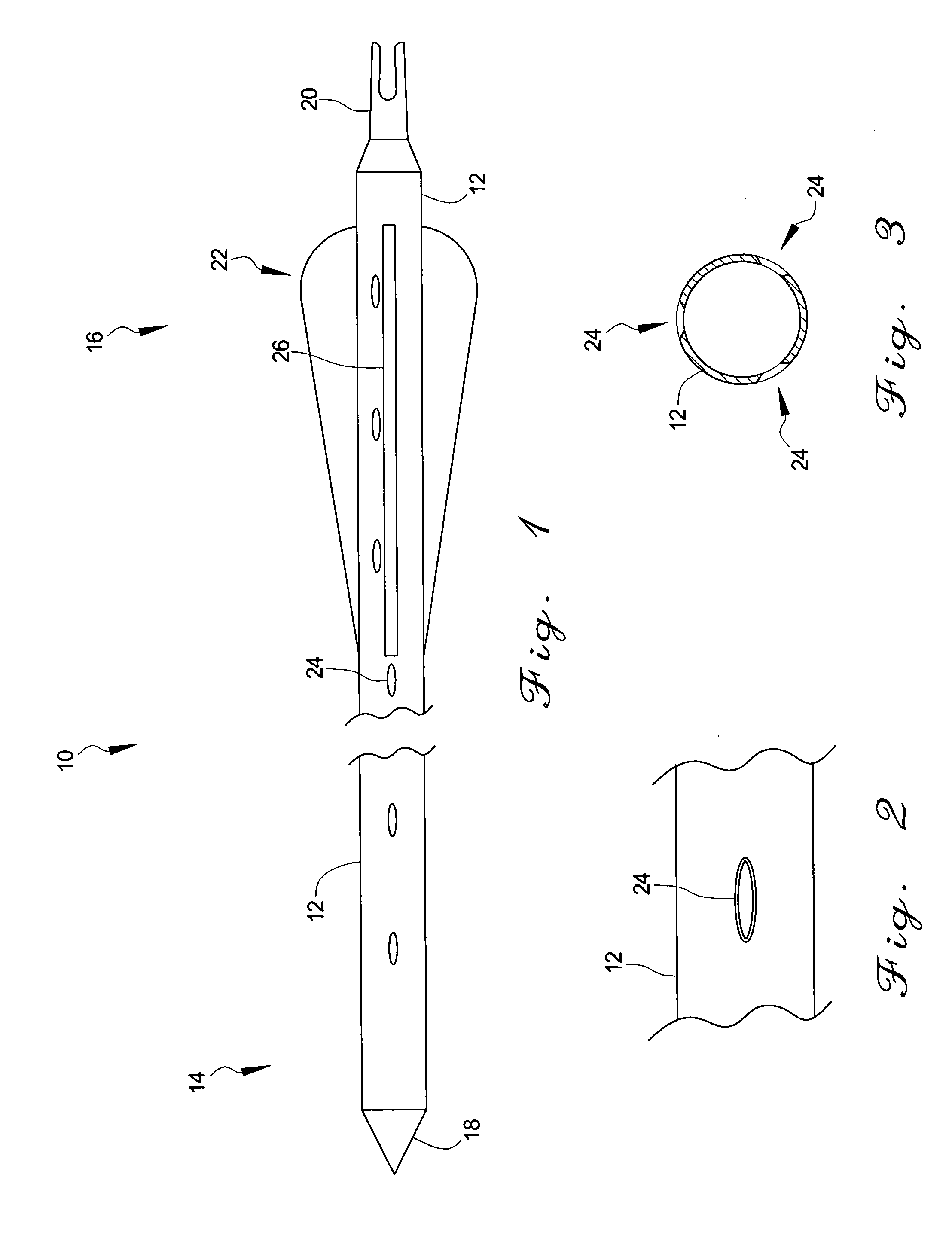Hunting projectile for channeling blood out of wild game
a projectile and wild game technology, applied in the field of hunting devices, can solve the problems of less likely to be recovered, more likely to suffer, and more likely to be wounded, and achieve the effects of eliminating the negative effect of the flight of the projectile, eliminating the sound of “whistling” and eliminating the sound of whirling
- Summary
- Abstract
- Description
- Claims
- Application Information
AI Technical Summary
Benefits of technology
Problems solved by technology
Method used
Image
Examples
Embodiment Construction
[0029] Referring to FIG. 1, a hunting projectile for channeling excessive blood flow from wild game is generally designated by numeral 10. As best seen in FIG. 1, hunting projectile (10) is comprised of a cylindrical, elongated, hollow shaft (12), with a proximal end (14) and a distal end (16). In the preferred embodiment, proximal end (14) of shaft (12) is configured to reversibly engage with point (18), while distal end (16) of shaft (12) is configured to engage with nock (20). Additionally, shaft (12) is configured with fletching (22) near its distal end (16). Each of the preceding elements are currently known to one skilled in the art.
[0030] Referring to FIGS. 1 and 2, shaft (12) contains a series of slotted perforations (24) running longitudinally along the length of shaft (12). As best seen in FIG. 3, slotted perforations (24) are characterized by a funnel shape tapering from its widest point at the outer surface of shaft (12) to its narrowest point at the inner surface of sh...
PUM
 Login to View More
Login to View More Abstract
Description
Claims
Application Information
 Login to View More
Login to View More - R&D
- Intellectual Property
- Life Sciences
- Materials
- Tech Scout
- Unparalleled Data Quality
- Higher Quality Content
- 60% Fewer Hallucinations
Browse by: Latest US Patents, China's latest patents, Technical Efficacy Thesaurus, Application Domain, Technology Topic, Popular Technical Reports.
© 2025 PatSnap. All rights reserved.Legal|Privacy policy|Modern Slavery Act Transparency Statement|Sitemap|About US| Contact US: help@patsnap.com


